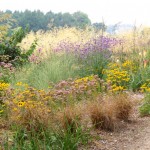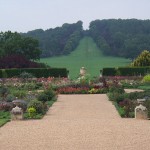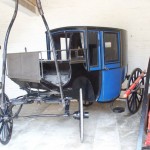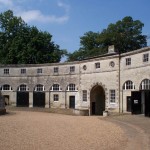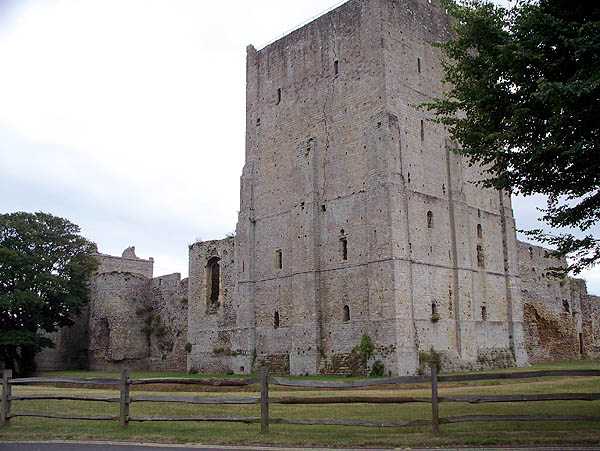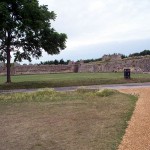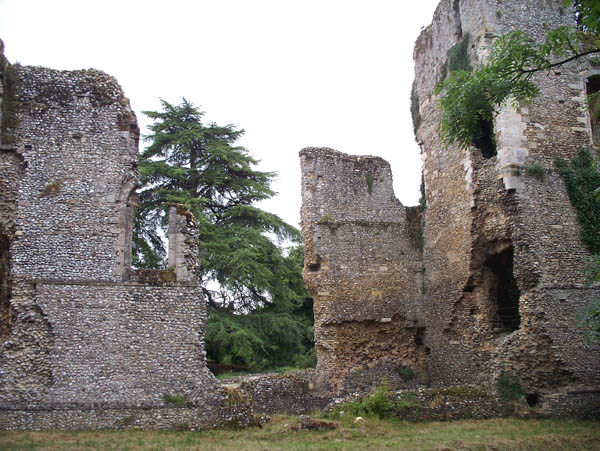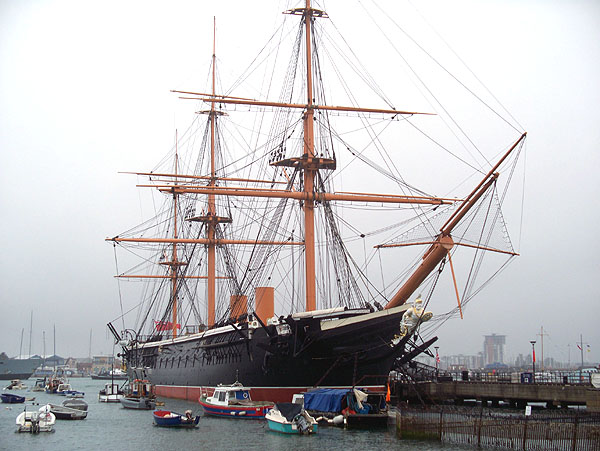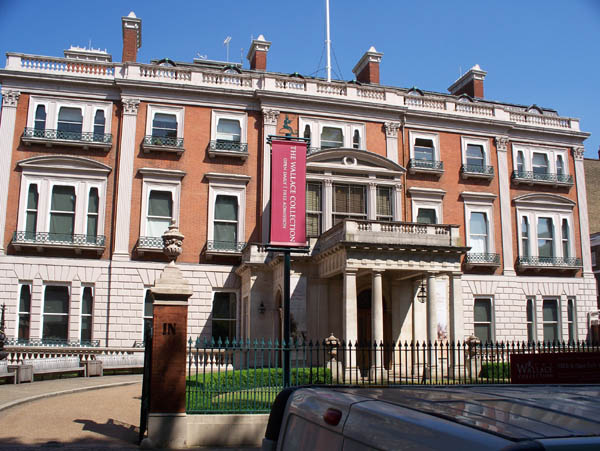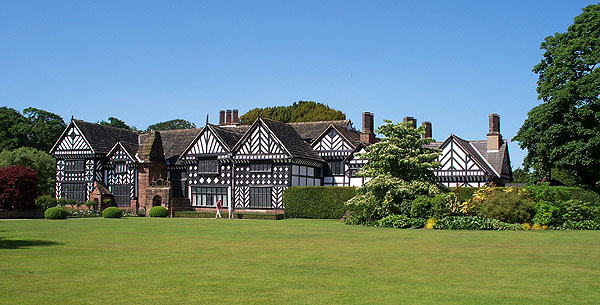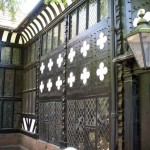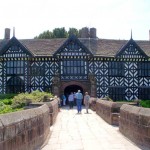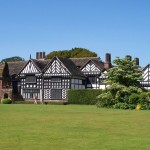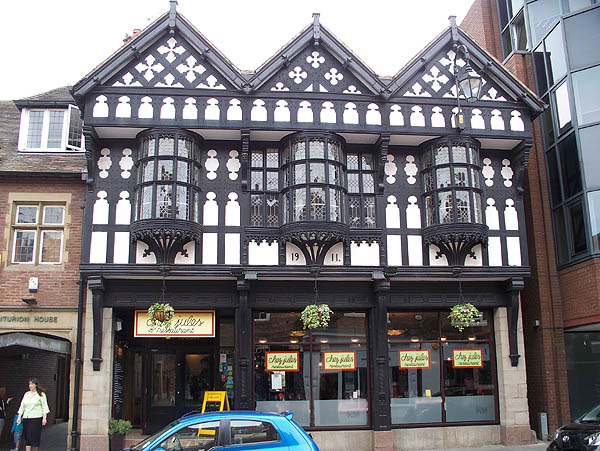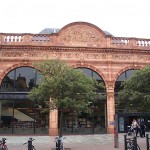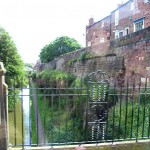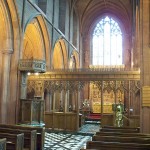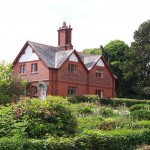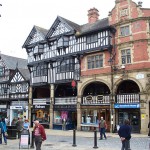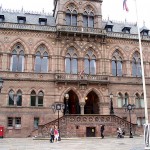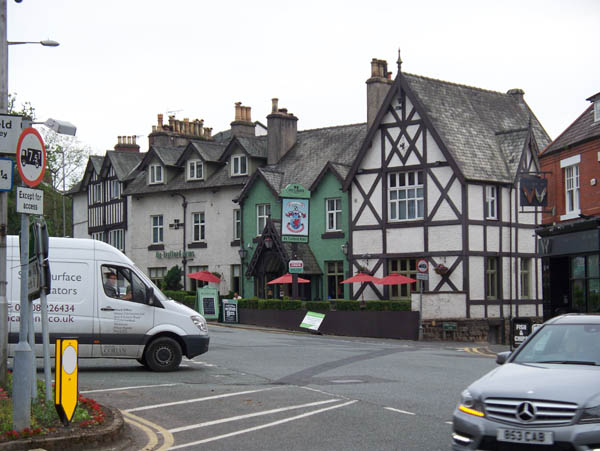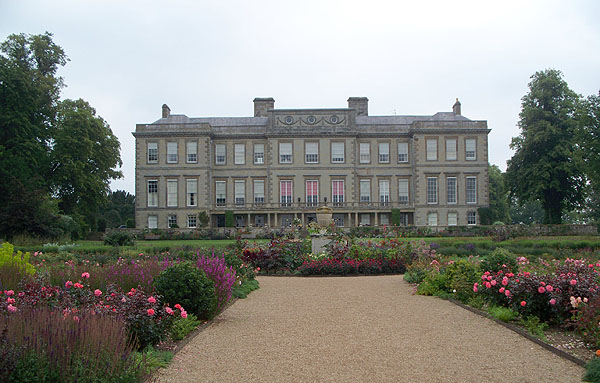
Private.
Ragley Hall was built from 1680, but not fully furnished and decorated till the middle of the 18th century. The house and the contents have not been greatly changed in style since then, but extensive restoration had to be carried out after the Second World war, when the house was used as a hospital. It is still owned by the Seymour family (Marquess of Hertford), who have owned the estate for centuries.
The principal floor contains a number of finely decorated rooms with impressive plasterwork, starting with the double-height Great Hall and continuing through the Music Room, Breakfast Room, Dining Room, Mauve Drawing Room, Red Saloon, Green Drawing Room, and Library. The contents are unremarkable, as all the best stuff went to the Hertford’s house (Wallace Collection) in London.
Some touches let you know that you are in a private home, not a National Trust house: a garish modern art canvas hung above the North Staircase Hall, the Prince Regents bed moved to provide a games room for the teenagers, and a vast and colorful modern mural by Graham Rust enlivening the South Staircase Hall.
Outside, there are formal gardens near the house, a stable block with an interesting carriage collection, an ice-house, and an extensive park including a lake.
Note that the standard admission admits you to the park and grounds only, and you have to pay a further fee at the house, if it’s open.
(If you are expecting to see an outdoor sculpture collection, you won’t, as it was removed over a year ago.)
No interior photography was allowed. Click on images to enlarge.
